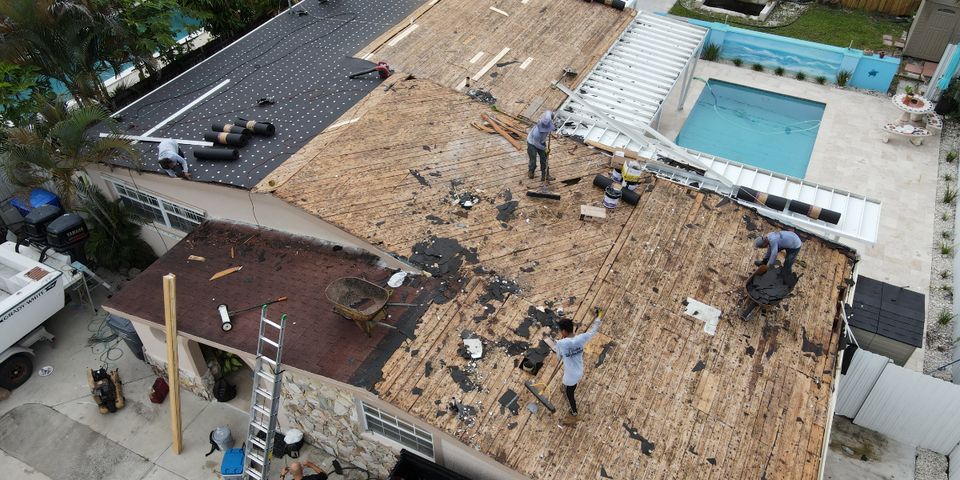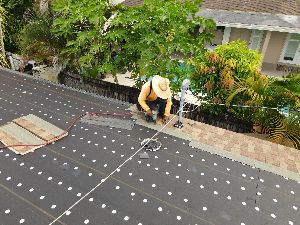
Familiarizing yourself with the various aspects of your home's roof will help you understand how the whole system works together. You'll also have an easier time identifying the severity of problems and describing the situation to a professional roofer. With this goal in mind, here's a closer look at the primary components.
What Are the Key Parts of a Residential Roof?
1. Decking
Decking is the first layer of the roofing system installed once the beams and trusses are secured. It’s made of plywood or oriented strand board (OSB), and it provides a solid base for the next layers. If the decking is exposed to the elements, it can weaken and rot, causing leaks and compromising stability.
2. Underlayment

The underlayment is a durable, waterproof material—such as synthetic material or rubberized asphalt—installed over decking. It works with the decking to boost insulation and serves as backup protection if the outer layer of the roof gets damaged. If the underlayment is exposed long enough without a roofer's attention, it can suffer damage from inclement or cold weather and impacts, revealing the decking and creating leaks.
3. Flashing
Flashing can be made of metal or composites that form a seal around protrusions in your roof, such as chimneys and vents, to keep out water. It can also be used as added security over joints where two planes of your roof meet.
Flashing can become loosened, scratched, or warped from storms and aging, allowing water directly into your attic space. For this reason, it's wise to have a roofer inspect it annually.
4. Roofing Material
The final layer is what's visible from the street and consists of the material you selected, such as slate, tile, shingles, or metal. It’s most often secured using roofing nails, though roofing adhesive or tar may be used, too.
This is your roof’s first defense against the elements and pests, and it can take a beating. If it’s not inspected regularly, issues like blow-offs could occur and lead to damage to the other layers of the roof until a serious leak forms.
5. Gutters
Your gutters will be attached to the fascia, which is the edging around the bottom of the roof. Gutters ensure water is funneled off the roof and away from your home.
If they become clogged or bent, water will pool against the edge of the roof and fascia, creating water damage that will spread if not corrected. Water may also make its way down to the home's foundation, leading to cracks and basement leaks.
For a high-quality roof installation or repair, trust Luke Skybuilder in Pembroke Pines, FL. These experienced roofers work with metal, tile, shingle, and flat roofs, and their work is backed by a 100% satisfaction guarantee and material warranties. They boast rapid response times and a 24/7 service hotline, and they're happy to offer full financing options throughout the southeast Florida Tri-County area. Request a quote or service online and call (954) 323-9078 to speak to a team member.
About the Business
(24 reviews)
Have a question? Ask the experts!
Send your question

